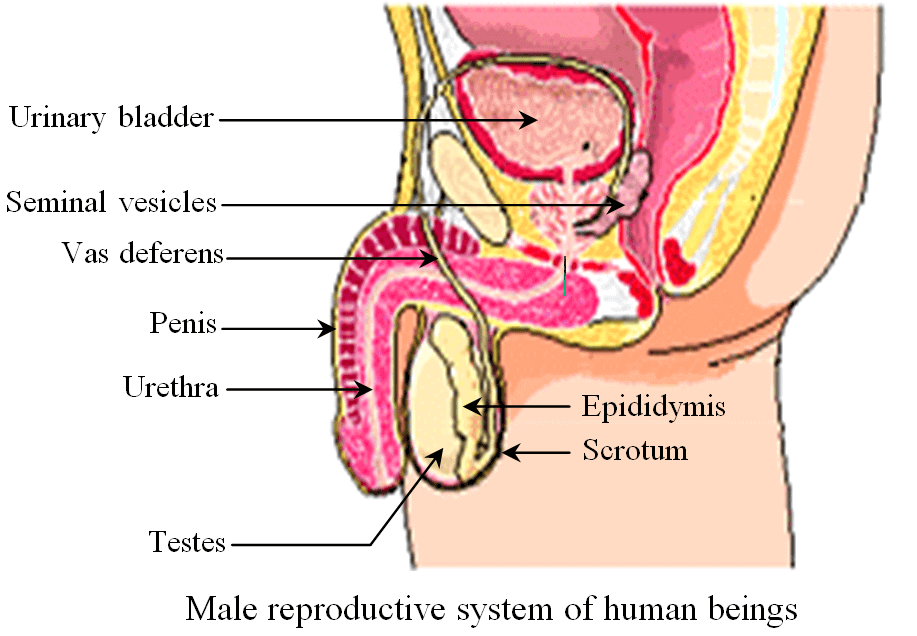Most of the male reproductive system is located outside of the man’s body. The external structures of the male reproductive system are the penis, the scrotum and the testicles.

1. Testes
The testes are oval organs that lie in the scrotum, secured at either end by a structure called the spermatic cord. a men have two testes. The testes are responsible for making testosterone, the primary male sex hormone, and for generating sperm.
2. Epididymis
The epididymis is a long, coiled tube that rests on the backside of each testicle. It functions in the transport and storage of the sperm cells that are produced in the testes.
3. Vas deferens
The vas deferens is a long, muscular tube that travels from the epididymis into the pelvic cavity, to just behind the bladder. The vas deferens transports mature sperm to the urethra in preparation for ejaculation.
4. Seminal vesicles
The seminal vesicles are sac-like pouches that attach to the vas deferens near the base of the bladder. The seminal vesicles produce a sugar-rich fluid (fructose) that provides sperm with a source of energy and helps with the sperms’ motility (ability to move).
5. Urethra
The urethra is the tube that carries urine from the bladder to outside of the body. In males, it has the additional function of expelling (ejaculating) semen when the man reaches orgasm.
6. Penis
The penis is the male organ for sexual intercourse. It has three parts: the root, which attaches to the wall of the abdomen; the body, or shaft; and the glans, which is the cone-shaped end of the penis. The glans, which also is called the head of the penis, is covered with a loose layer of skin called foreskin. The opening of the urethra, the tube that transports semen and urine, is at the tip of the glans penis. The body of the penis is cylindrical in shape.
Semen, which contains sperm, is expelled (ejaculated) through the end of the penis when the man reaches sexual climax (orgasm). When the penis is erect, the flow of urine is blocked from the urethra, allowing only semen to be ejaculated at orgasm.
7. Scrotum
The scrotum is the loose pouch-like sac of skin that hangs behind the penis. It contains the testicles (also called testes), as well as many nerves and blood vessels. The scrotum has a protective function and acts as a climate control system for the testes. For normal sperm development, the testes must be at a temperature slightly cooler than the body temperature. Special muscles in the wall of the scrotum allow it to contract and relax, moving the testicles closer to the body for warmth and protection or farther away from the body to cool the temperature.
Test Your Understanding and Answer These Questions:
